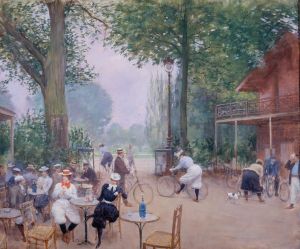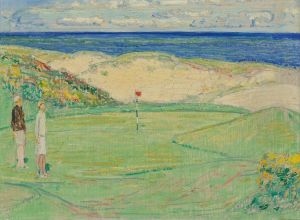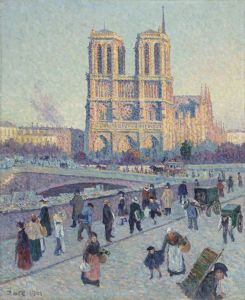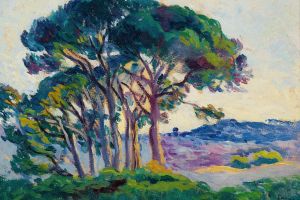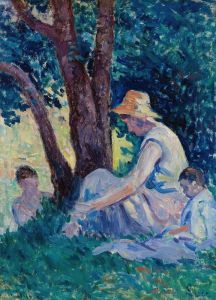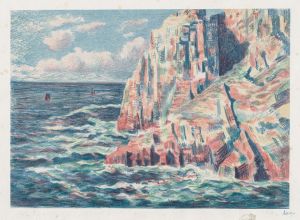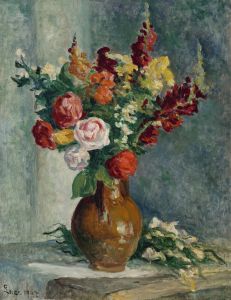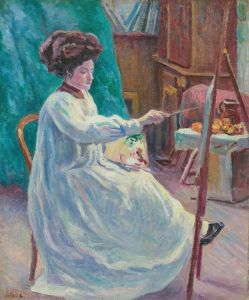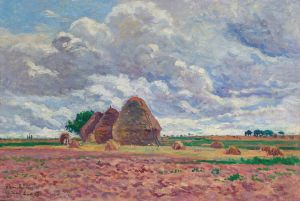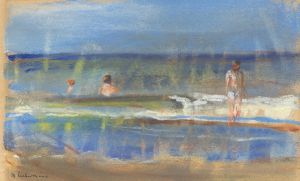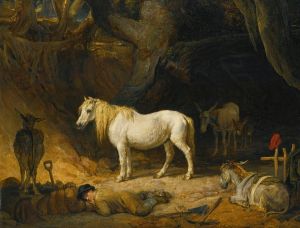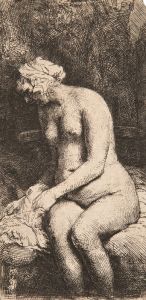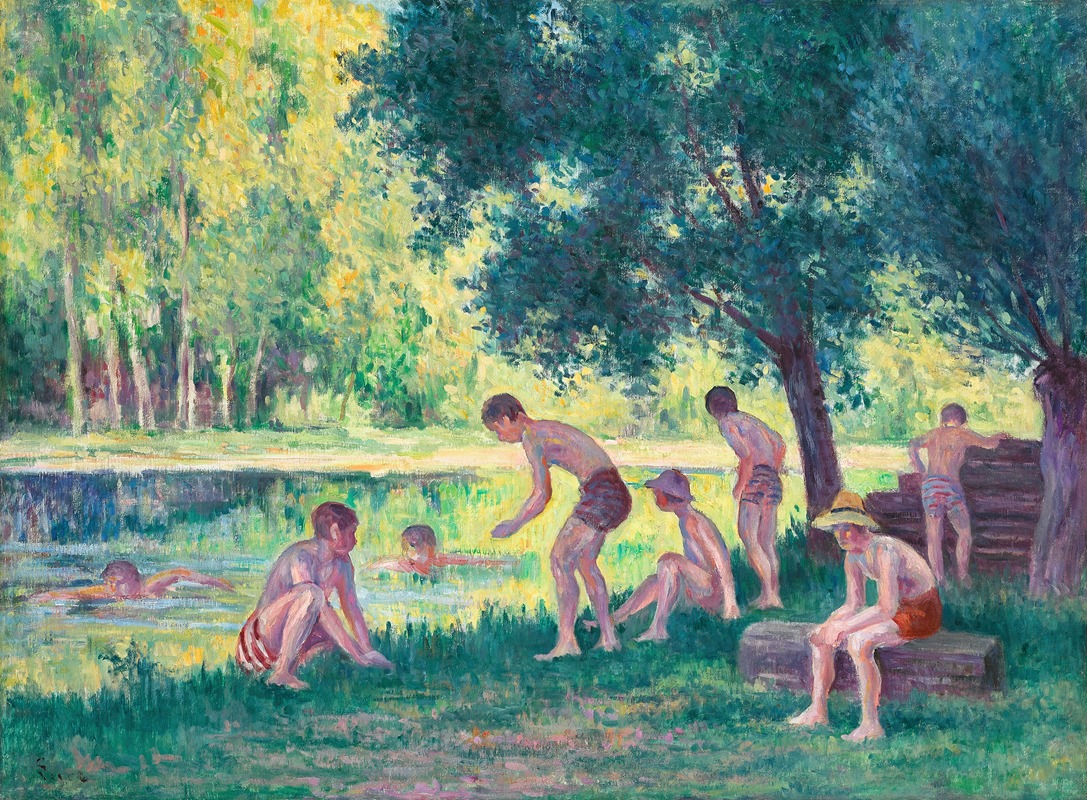
Baignade dans la cure
A hand-painted replica of Maximilien Luce’s masterpiece Baignade dans la cure, meticulously crafted by professional artists to capture the true essence of the original. Each piece is created with museum-quality canvas and rare mineral pigments, carefully painted by experienced artists with delicate brushstrokes and rich, layered colors to perfectly recreate the texture of the original artwork. Unlike machine-printed reproductions, this hand-painted version brings the painting to life, infused with the artist’s emotions and skill in every stroke. Whether for personal collection or home decoration, it instantly elevates the artistic atmosphere of any space.
Maximilien Luce was a French Neo-Impressionist artist known for his paintings, illustrations, and engravings. He was born on March 13, 1858, in Paris, France, and became associated with the Neo-Impressionist movement, which was characterized by the use of pointillism—a technique involving the application of small, distinct dots of color to form an image. Luce's work often depicted scenes of everyday life, landscapes, and urban environments, capturing the essence of the late 19th and early 20th centuries.
"Baignade dans la Cure" is one of Luce's notable works, showcasing his adept skill in capturing light and atmosphere. The painting's title translates to "Bathing in the Cure," referring to the Cure River, which flows through the Burgundy region in France. This region, known for its picturesque landscapes and serene environment, provided a perfect backdrop for Luce's exploration of light and color.
The painting depicts a tranquil scene of people bathing in the river, surrounded by lush greenery and the gentle flow of water. Luce's use of the pointillism technique is evident in the way he captures the shimmering effect of sunlight on the water's surface and the surrounding foliage. The small, precise brushstrokes create a vibrant tapestry of colors that blend seamlessly when viewed from a distance, a hallmark of the Neo-Impressionist style.
Luce's choice of subject matter reflects his interest in capturing moments of leisure and the simple pleasures of life. The scene is idyllic, evoking a sense of peace and relaxation, which was a common theme in many of his works. By focusing on everyday activities, Luce was able to convey a sense of universality and timelessness, allowing viewers to connect with the scene on a personal level.
Throughout his career, Luce was influenced by the works of Georges Seurat and Paul Signac, both pioneers of the Neo-Impressionist movement. He shared their interest in scientific theories of color and light, which informed his approach to painting. Luce's dedication to these principles is evident in "Baignade dans la Cure," where he meticulously applies color theory to create a harmonious and balanced composition.
In addition to his artistic pursuits, Luce was also known for his political activism. He was an anarchist and used his art to express his social and political beliefs. While "Baignade dans la Cure" does not overtly convey political themes, it reflects Luce's broader interest in depicting the lives of ordinary people and the beauty of the natural world.
Maximilien Luce's contribution to the Neo-Impressionist movement and his ability to capture the essence of his subjects have earned him a lasting place in the history of art. "Baignade dans la Cure" remains a testament to his skill and vision, offering viewers a glimpse into the serene beauty of the French countryside through the lens of a masterful artist.





